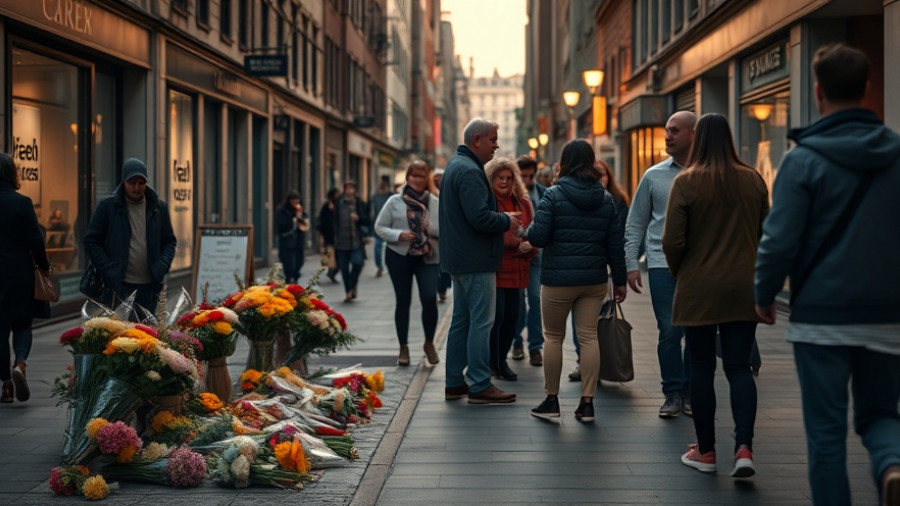
A Community's Response to Violence: From Grief to Action
The recent La Verne Avenue murder has ignited a wave of public response in Belmont Shore, reflecting a shift from mere mourning to a call for actionable change. When the Belmont Shore Business Association (BSBA) released its delayed statement post-tragedy, many residents interpreted it as a defensive maneuver to protect the business district's image rather than an honest engagement with the community's pressing public safety issues.
This perspective aligns with growing concerns over how public relations narratives can obscure deeper structural problems behind crime. The BSBA’s appeal for a heightened police presence indicated a reliance on law enforcement as the primary solution. However, as community voices like resident Alicia Velasco remind us, real solutions must also involve addressing underlying community dynamics and engaging residents in the dialogue.
Charting a New Course for Community Safety
In response to the lack of proactive measures from city leadership, Velasco and other residents have stepped up to propose innovative strategies aimed at curtailing violence while also facilitating productive engagement between local businesses, law enforcement, and the community. Following the Beachcomber’s pragmatic recommendations, Velasco's proposals include establishing a police substation in a vacant storefront and conducting after-hours inspections for compliance with Conditional Use Permits (CUPs). Such initiatives aim not only to enhance safety but also to engender trust between the community and law enforcement.
Moreover, the idea to maintain food service until midnight and prohibit the removal of dining tables underscores the need for community-centric planning rather than measures that merely react to violence.
The Importance of Grassroots Action in Urban Safety Initiatives
The proposed measures by community members like Velasco illustrate the power of grassroots actions in shaping public safety. Unlike the top-down approach traditionally favored by organizations such as the BSBA, these firsthand accounts of safety concerns provide a grounded understanding of local issues. They empower residents to advocate for immediate changes within their environment, moving conversations from abstract theories to practical, measurable proposals.
As Long Beach Police Department (LBPD) officials acknowledge the complexities of crime reporting and response, this is where community input becomes invaluable. Emphasizing the role of residents in collating data on local issues can better inform policing efforts, ensuring that police resources are focused on areas with the highest impact rather than on broad, untargeted measures.
A Call for Transparency and Accountability in Community Policing
As local leaders and community members grapple with these issues, a theme of accountability emerges. The responses to Velasco's propositions reveal a wider sentiment: residents want to see effective communication and genuine engagement from their elected officials. The suggestion for more frequent meetings to address safety concerns reflects a desire for transparency, which is essential in building a collaborative safety model. This encompasses not just the actions of law enforcement but also the expectations from local businesses, creating a comprehensive safety strategy that involves all stakeholders.
Ultimately, fostering trust and transparency is crucial for developing effective community policing strategies. The contemporary landscape of urban safety demands collaborative approaches that prioritize local voices—a concept effectively embraced by the Long Beach Police Department in their evolution towards community-oriented policing, as discussed in various initiatives.
Future Directions: Building a Safer Belmont Shore
For Belmont Shore, the call for a multifaceted response to crime is clear. While traditional methods such as increased police presence may offer a temporary solution, they cannot replace the richer, broader dialogue needed to truly address the unique challenges the community faces. Community safety is cultivated through shared responsibilities, mutual understanding, and proactive measures that address the root causes of violence.
The time for action is now, as residents mobilize to demand comprehensive safety plans that leverage local insights and lived experiences. As they advocate for their interests, they symbolize a community united not just in grief, but also in a collective pursuit for a safer tomorrow. Each resident's voice matters, contributing to a narrative where safety is not merely a function of policing, but a shared community responsibility.
If you resonate with the importance of community-driven safety initiatives, consider engaging in local discussions and reaching out to elected officials. Your voice can help shape a safer and more vibrant Belmont Shore.
 Add Row
Add Row  Add
Add 




Write A Comment